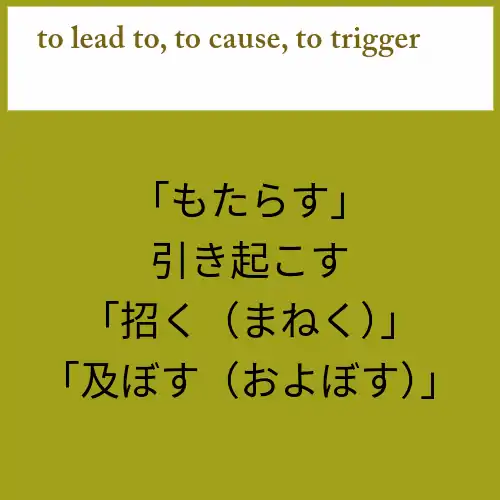如何表达“一边……一边……”同时做两件事情
辨析:「つつ」 vs. 「ながら」 vs. 「も~し」 日语中「ながら」和「つつ」在表达“一边……一边……”的意思时确实很相似,但在语感、使用场景和口语化程度上有所不同。详细对比如下: ✅ 句子 1...
在日语中,表示“正在……的时候”或“恰逢……的时候”的语法有很多
在日语中,表示“正在……的时候”或“恰逢……的时候”的语法有很多,尤其是在 N4、N3、N2 级别的考试中会重点考察不同的表达方式。下面是常见的文法,按 JLPT 级别分类,特别强调 N2 重点考察的...
如何用日语表达“……之前”和“……之后”的含义
「さきに(先に)」的对立词(反义词)主要取决于语境和使用方式。以下是几种常见的对应词: 1.「さきに」表示“先、首先、事先”时的对立词 対義語(反义词):「あとで(後で)」 例句: 先に食べてください...
如何用日语语法表达“无论……还是……”的含义
涉及四种相似的日语表达方式:「関わらず」「につけ…につけ」「にしろ…にしろ」「でも…でも」。它们的意思都有“无论……还是……”的含义,但用法有所不同。它们在 N4、N3、N2 的考察情况,尤其是 N2...
表示“由于……的原因”相关的日语文法
在日语中,表示**“由于……的原因”** 的语法有很多,尤其是在 N4、N3、N2 级别的考试中,会考察不同程度的因果关系表达方式。下面是一些常见的表达方式,并按 JLPT 级别整理出来。 🟢 N4 ...
How to say to lead to, to cause, to trigger something in Japanese
Here’s a detailed explanation of these related words and their grammar. These words, especially 「もたら...
How to say something might happen in Japanese
1. "〜恐れがある" vs. "〜かもしれない" (Differences and When to Use Each) ✅ Similarities: Both expressions indica...
How to say Must not do and Cannot continue to do in Japanese
1. Introduce about 「てはいけない」and 「てはいられない」 ✅ Similarities: Both structures include 「ては」 and are somewh...
How to say “Not having to do something” or “Avoiding something” in Japanese
You can use 「〜ずに済む」and「〜しなくてもいい」to describe you have think about not to do something also be OK. Dif...
Grammar Structures for “Doing A First, Then Doing B” in Japanese (N2 Level Focus)
In JLPT N2, several grammar structures express "doing A first, then doing B". While 「上で」 is the most...







